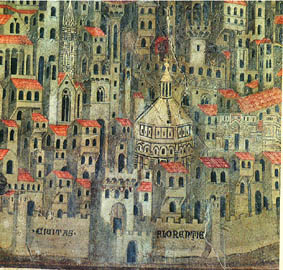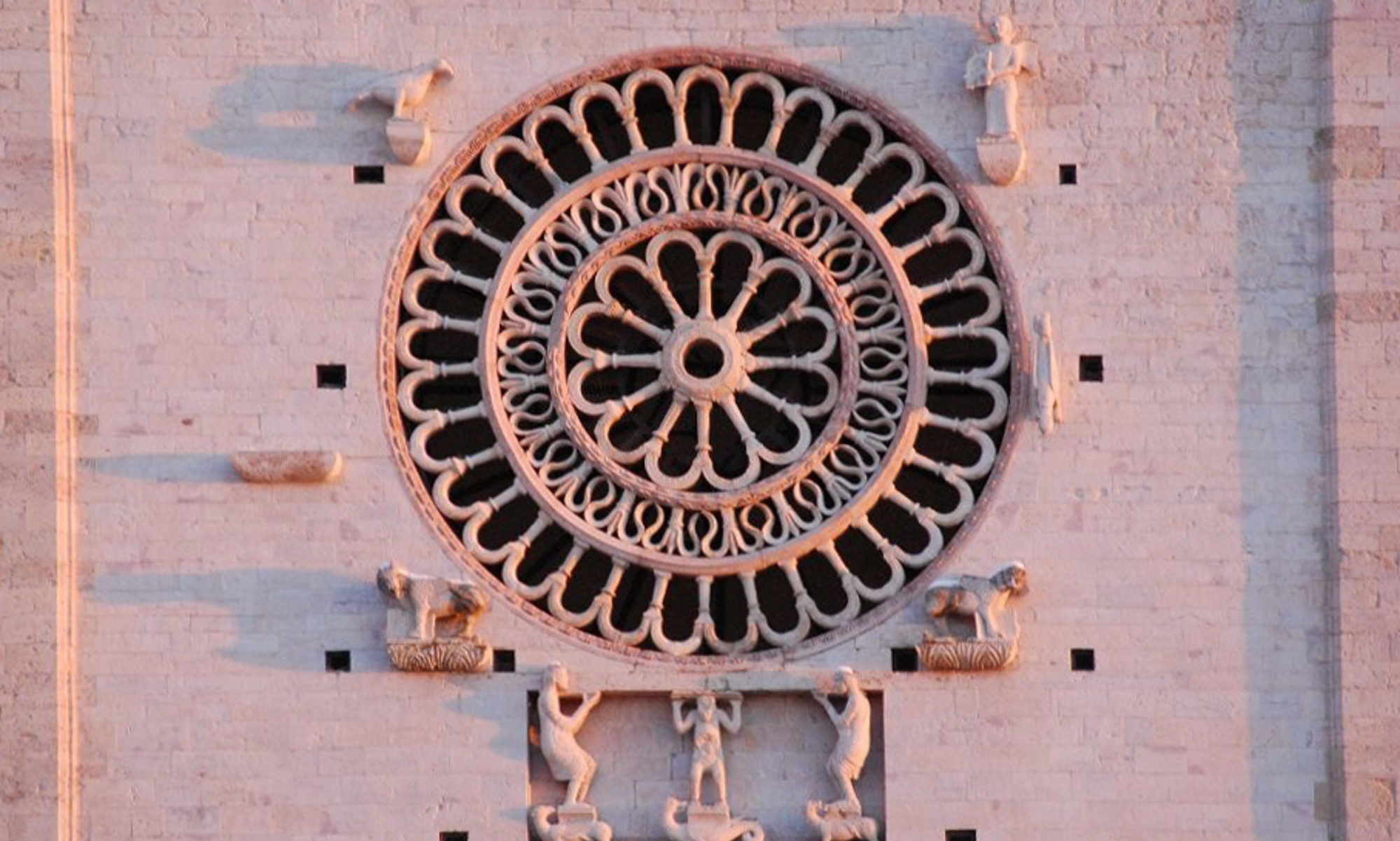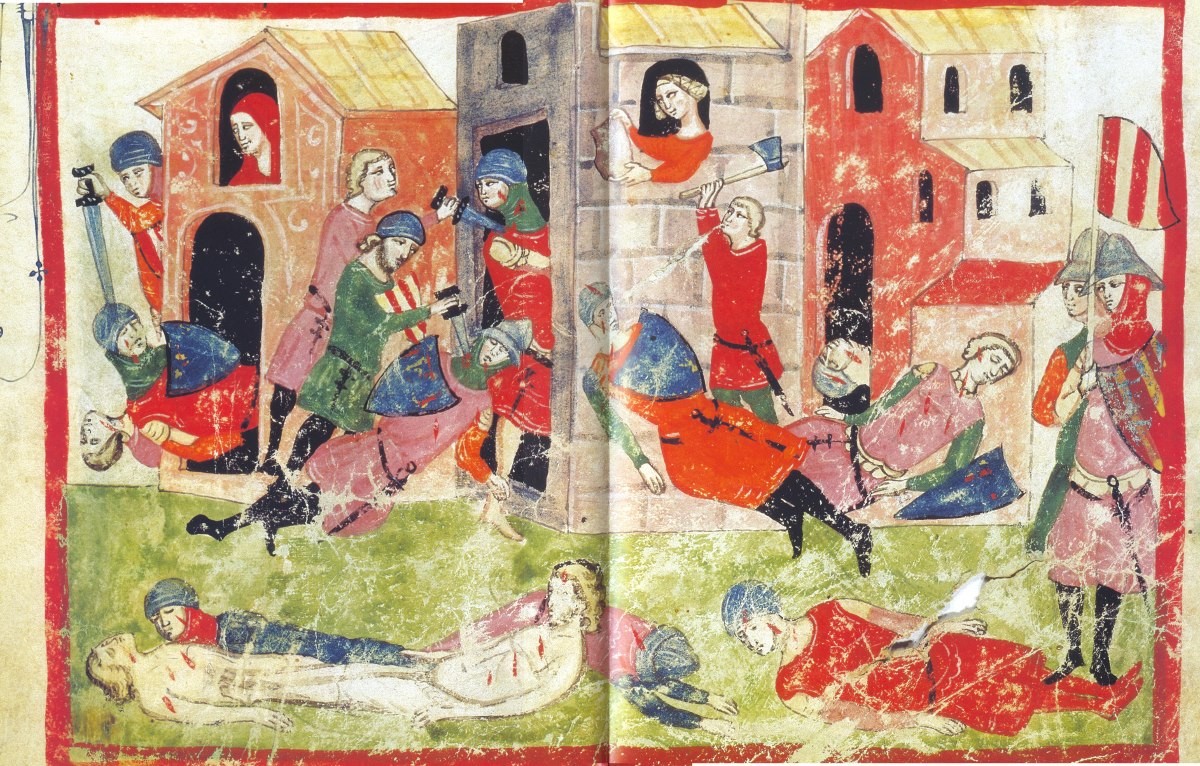
For a long time I’ve described myself as interested in Italy in the middle ages, as Dantecentric, as someone who wants to understand what came before the Renaissance. That is still true, but when I think about the settings I choose when I write, I’ve realized that they all have one thing in common.
All my work takes place in medieval Italian cities.
True, those cities were crowded, dirty, noisy, chaotic, malodorous, pestilential, dangerous, and politically volatile. But they were where the action was. They teemed with life and color and creativity and passion and ambition – in short, with all things human. When Florence’s population quadrupled over the course of the thirteenth century, it wasn’t the birthrate that did it. Rather, it was immigration from the hinterlands. There were good reasons all those people wanted to try their luck in the city.
My first novel, A Thing Done, takes place in Florence in the early 13th century. It unfolds in the palazzos, the towers, the churches, the narrow and winding streets of the medieval city. The story it tells is drawn from the ancient chronicles (and fleshed out a bit), and it traces the development of a pivotal incident in the history of this extraordinary city. Today’s Florence is at once modern, baroque, and Renaissance; if you want to find the middle ages, they’re still there, but you have to work at it. And I have.
Here is a tower that was the scene of a major event in my novel.
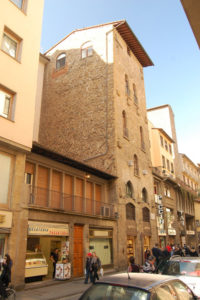
Today it houses a jewelry store, and it’s a fraction of its former height. The government of Florence, during the brief period when it was controlled by neither the Guelf party nor the Ghibelline, but by the wealthy merchants, required the nobles to reduce the height of their formidable defensive towers in an effort to contain the lawlessness and the sheer military might of those powerful families. Thus, the vertiginously scary balcony which so terrifies my protagonist is long gone, but the base of the tower remains.
My work in progress, Lady of the Seven Suns, begins in the same year as A Thing Done, but instead of Florence it is set in Rome and Assisi.
With Rome we have a study in contrasts. Instead of Florence’s Renaissance soul with baroque window-dressing, Rome is a big modern city whose twin historical emphases are classical Rome and the early Christian church, with a substantial baroque overlay. Rome fascinates, but when you go looking for vestiges of the 13th century they are not always easy to find. There are churches that hearken back to those years and earlier, though many of them have been “baroqued” beyond recognition. But it is a challenge to find any medieval streets, neighborhoods, public buildings, or residences.
Here is the ancient Roman ruin that was incorporated into a fortified palazzo in the middle ages – the building some historians say my protagonist called home.
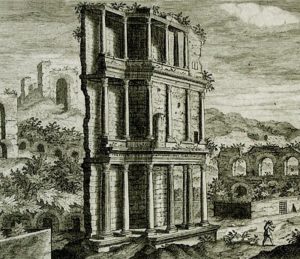
And here is the patch of grass where that building used to stand. We can see it before my character’s time period and after, but not during.
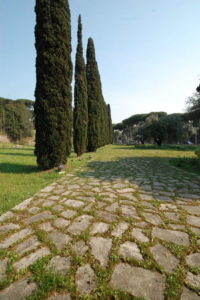
And here is another candidate for a part of her city home – another truncated tower, this one inside the Circus Maximus.
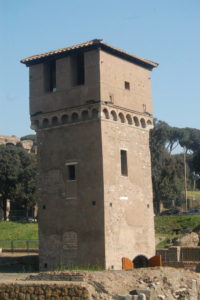
Ah, but Assisi… Assisi today is a city Saint Francis and his followers (including my protagonist) would recognize. There are differences, certainly. It is a pilgrimage destination and a tourist magnet, which results in something of a Franciscan Disneyland on one level. But that is only a veneer, and the medieval city waits just below it. Assisi, for me, is like coming home.
Here you see a painting by Giotto (1266-1337) of a well-known building in Assisi, and the following picture is a photo of that same building taken a few years ago.
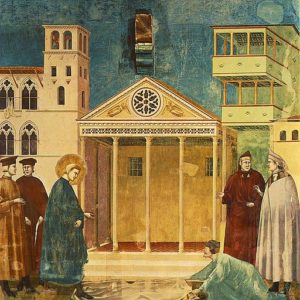
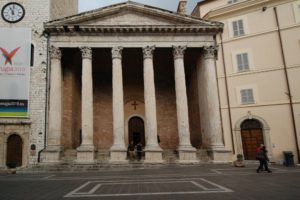
Each of these three cities – Florence, Rome, and Assisi – provides its own challenges and opportunities to the researcher, as well as its own pleasures and frustrations. As a frequent visitor to Italian cities, I can be certain I will never run out of material!
